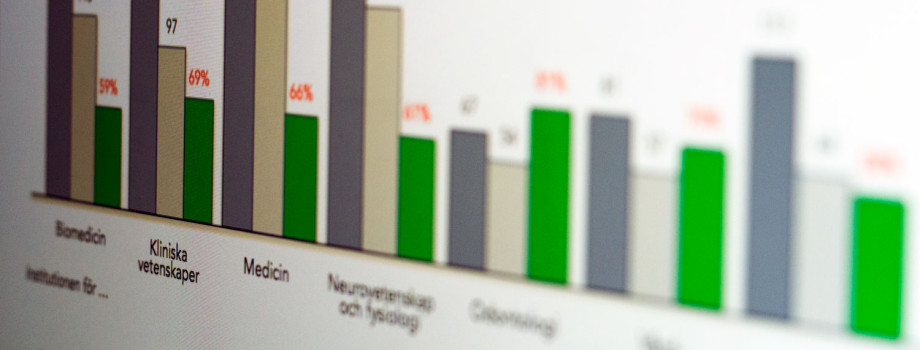ORGANIZATION. The survey on perception of Sahlgrenska Academy’s institutions that was conducted last spring does not form the basis for a review of the institution’s departmentalization. This was the conclusion of the Academy Board.
The survey, “Views on Sahlgrenska Academy’s Institutions 2015” was conducted during March and April. 680 people responded, which gave a good response frequency – 65 percent. The survey was developed in cooperation with the Research and Development Department, which also compiled the results for the Academy Board.
Of those who responded to the survey, 71 percent wanted to maintain the current institutional divisions or only execute minor changes, as opposed to 29 percent who wanted to see extensive or somewhat extensive changes. Those most satisfied with the current institutions are colleagues from the smallest, and perhaps the most unified, institutions: Odontology and Health and Care Sciences. 48 percent of all those who responded stated that they are satisfied with the activities they are part of at Sahlgrenska Academy, as opposed to 19 percent that reported being dissatisfied. 77 percent of those who responded stated that their own research and teaching is, to a large degree, placed in the correct institution, compared to 9 percent who felt otherwise.
The compilation also showed a variance in how well activities function in different institutions. Researchers and teachers are more dissatisfied and want to change the organization to a greater degree than to do colleagues in managerial positions and TA personnel.
The Board concluded that the survey did not form the basis for a review of how the institutions are departmentalized, but that it did reveal other areas where there may be room for improvement, particularly dialog and communication.
The survey was conducted following a proposal from the Reform Club to unconditionally evaluate the major institutional reform executed in 2006, where 15 institutions became six.











